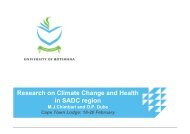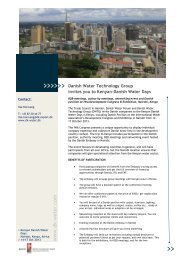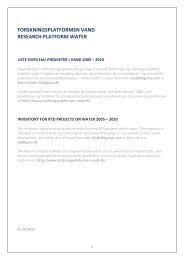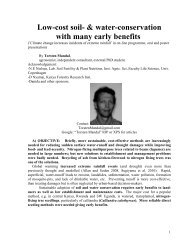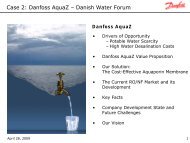energy strategy 2050 - Energy Europe
energy strategy 2050 - Energy Europe
energy strategy 2050 - Energy Europe
Create successful ePaper yourself
Turn your PDF publications into a flip-book with our unique Google optimized e-Paper software.
Introduction: From coal, oil and gas to green <strong>energy</strong><br />
Targets in the government’s work plan<br />
••<br />
Denmark is to be a green and sustainable society<br />
••<br />
Denmark is to be among the three countries in the<br />
world to raise its renewable <strong>energy</strong> share most by<br />
2020<br />
••<br />
Denmark is to be among the three most <strong>energy</strong>efficient<br />
countries in the OECD by 2020.<br />
Danish targets arising from the EU climate and<br />
<strong>energy</strong> package<br />
••<br />
The share of renewable <strong>energy</strong> will be increased to<br />
30% of final <strong>energy</strong> consumption by 2020 as part<br />
of an overall EU target of 20% renewable <strong>energy</strong> by<br />
2020.<br />
••<br />
The share of renewable <strong>energy</strong> in the transport sector<br />
will be 10% by 2020<br />
••<br />
Emissions in the non-ETS sectors will be reduced<br />
gradually in 2013-2020 and by 20% by 2020 relative<br />
to 2005 as part of an overall EU target to reduce<br />
emissions by 20% by 2020 relative to 1990.<br />
Targets in the national <strong>energy</strong> agreement for the<br />
period 2008-2011<br />
••<br />
In 2020, primary <strong>energy</strong> consumption will be 4% less<br />
than in 2006.<br />
Danish objectives for EU climate and <strong>energy</strong><br />
policy<br />
••<br />
The government is working for an EU commitment<br />
to reduce overall emissions of greenhouse gases by<br />
30% by 2020 relative to the 1990 level.<br />
Box 0.1 The government’s targets underpinned by <strong>Energy</strong><br />
Strategy <strong>2050</strong><br />
Fossil fuels are cheaper than renewables. This will probably<br />
hold true for some time yet. This implies economic<br />
costs in the transition to fossil fuel independence and will<br />
ultimately have to be paid by the Danish consumers of<br />
<strong>energy</strong>; in other words by companies and private households.<br />
The government therefore believes it is vital that<br />
the transition takes place as cost-effectively as possible,<br />
with concern for the long-term viability of public finances,<br />
the competitiveness of companies and ultimately for<br />
Danish jobs.<br />
On the one hand, measures should not be forced<br />
through with an unnecessarily high expenditure right<br />
now. On the other hand, the benefits of lower greenhouse<br />
gas emissions, lower <strong>energy</strong> consumption, more<br />
stable fuel costs and less dependence on fossil fuels,<br />
also have value in the years up to <strong>2050</strong>.<br />
8<br />
<strong>Energy</strong> Strategy <strong>2050</strong> – from coal, oil and gas to green <strong>energy</strong>.



